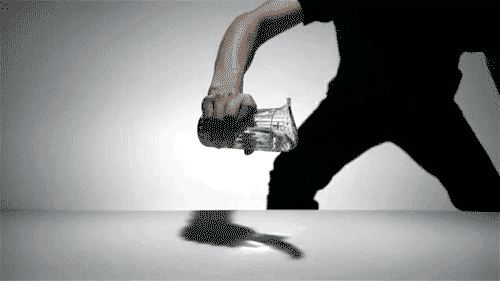expose-the-light:The Surprisingly Strange Physics of Water 1. Race to the bottom A logical person
expose-the-light: The Surprisingly Strange Physics of Water 1. Race to the bottom A logical person might assume that it would take longer for hot water to plunge down the temperature scale to 32 degrees Fahrenheit (0 degrees Celsius) and freeze than would cold water. But oddly enough, this is not always the case. As was first observed by a Tanzanian high school student, Erasto Mpemba, in 1963, hot water actually freezes faster than cold water when the two bodies of water are exposed to the same subzero surroundings. And no one knows why. One possibility is that the Mpemba effect results from a heat circulation process called convection. In a container of water, warmer water rises to the top, pushing the colder water beneath it and creating a “hot top.” Scientists speculate that convection could somehow accelerate the cooling process, allowing hotter water to freeze faster than cooler water, despite how much more mercury it has to cover to get to the freezing point. 2. Levitating liquid When a drop of water lands on a surface much hotter than its boiling point, it can skitter across the surface for much longer than you’d expect. Called the Leidenfrost effect, this occurs because, when the bottom layer of the drop vaporizes, the gaseous water molecules in that layer have nowhere to escape, so their presence insulates the rest of the droplet and prevents it from touching the hot surface below. The droplet thus survives for several seconds without boiling away. 3. Empty space Though the solid form of almost every substance is denser than its liquid form, due to the fact that atoms in solids normally pack tightly together, this does not hold true for H2O. When water freezes, its volume increases by about 8 percent. This is the strange behavior that allows ice cubes, and even gargantuan icebergs, to float. When water cools to its freezing point, there’s less energy causing its molecules to slosh around, so that the molecules are able to form steadier hydrogen bonds with their neighbors, and gradually lock into position; this is the same basic process that causes all liquids to solidify. And just like in other solids, the bonds between molecules in ice are indeed shorter and tighter than the loose bonds in liquid water; the difference is that the hexagonal structure of ice crystals leaves a lot of empty space, which makes ice less dense than water overall. The volume surplus can sometimes be seen in the form of “ice spikes ” on top of ice cubes in your freezer. These spikes are composed of the excess water that is squeezed out of a cube by the freezing (and expanding) ice around it. In a container, water tends to freeze from the sides and bottom toward the center and top, so that the ice expands toward the middle. Sometimes, a pocket of water gets trapped in the middle with nowhere to run, and squirts out of a hole in the top of the cube, freezing in the shape of a squirt. 4. One of a kind As the saying goes, “no two snowflakes are alike.” Indeed, in the entire history of snow, every single one of these beautiful structures has been completely unique. Here’s why: A snowflake starts out as a simple hexagonal prism. As each freezing flake falls, it bumps into a unique range of shape-changing conditions, including different temperatures, humidity levels and air pressures. That’s enough variables that the crystal formation never happens in the same way twice. That said, the cool thing about snowflakes is that their six arms grow in perfect synchrony, creating hexagonal symmetry, because each arm experiences the same conditions as all the others. 5. Where are you from? The exact origin of our planet’s water, which covers about 70 percent of Earth’s surface, is still a mystery to scientists. They suspect that any water that conglomerated on the surface of the planet as it formed 4.5 billion years ago would have evaporated off from the intense heat of the young, blazing sun. That means the water we have now must have gotten here later. How? Well, during a period around 4 billion years ago called the Late Heavy Bombardment, massive objects, probably from the outer solar system, hit Earth and the inner planets. It’s possible that these objects were filled with water, and that these collisions could have delivered gigantic reservoirs of water to Earth. Comets â chunks of ice and rock with tails of evaporating ice that make long, looping orbits around the Sun — are likely culprits for what landed us with all this liquid. There’s one problem, however: Remote measurements of the water evaporating off of several major comets (Halley, Hyakutake, and Hale-Bopp) have revealed that their water ice is made of a different type of H20 (containing a heavier isotope of hydrogen) than Earth’s, suggesting that such comets may not be the source of all our wonderful water. ISN’T PHYSICS SO COOL?! -- source link
Tumblr Blog : expose-the-light.tumblr.com
#physics#awesome
